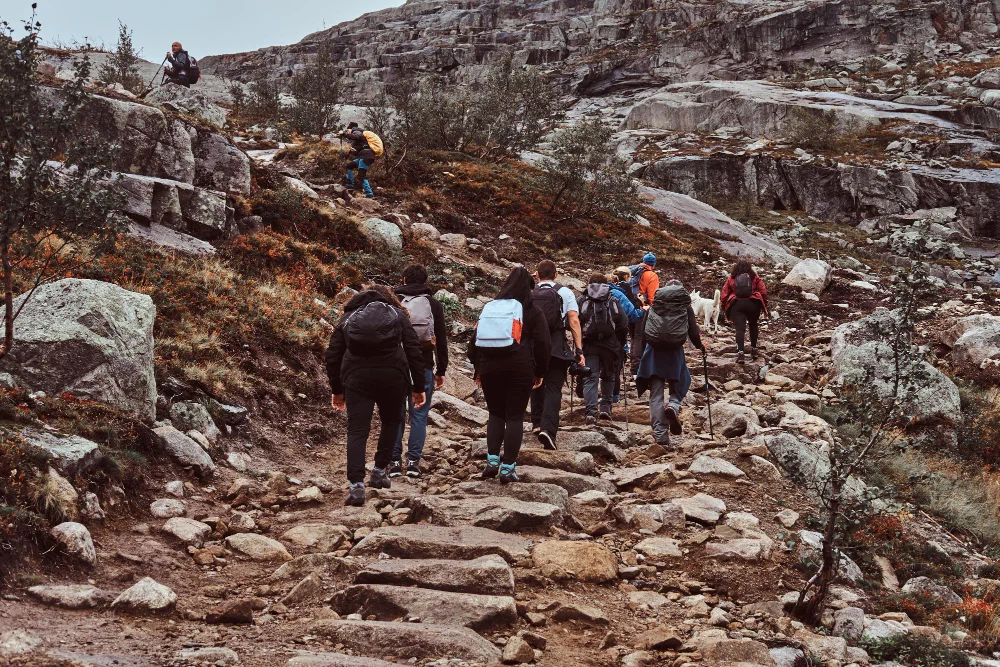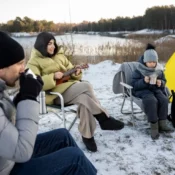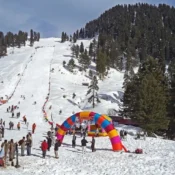Trekking is also one of the most exciting activities, and it provides a combination of fun and adventure as well as pleasure and satisfaction. It is a chance to be with nature, to explore new territories and to challenge one’s bodies. It is essential for anyone to get to know some of the key trekking tips and to appreciate some of the trekking safety advice when going for a trekking adventure. The following is a checklist crucial for preparation, safety, and environmental measures that need to be taken in order to achieve the best trekking adventure.
Preparing for Your Trek: Key Steps for Success
Preparation is therefore the key that leads to success when undertaking a trekking experience. It is also wise to prepare in advance so that even when faced with various obstacles, the trekkers will be well prepared to enjoy the trekking.
Research Your Trekking Route
Preliminary research and study of the trekking route is very important. As to the requirements, it is necessary to highlight that one should know the degree of the complexity of the trail, climate conditions, altitude, and culture of the people living in the country. Information from guide books, official trekking websites and blogs can be useful in developing a trekking preparation guide.
Physical Fitness and Training
Trekking for beginners entails extra caution because it might be their first time to encounter some of the hurdles of hiking. It is recommended that new hikers should begin with small hikes to help them create confidence, and as time progresses, they can go for long hikes with difficulty. Cardiovascular exercises are various exercise regimes that build the endurance of the body through strength training and flexibility. Applying the trekking fitness tips, such as practising uphill and downhill hiking with a loaded backpack, will make the actual trek easier to handle.
Packing the Essentials
One of the most important things that any trekker needs to prepare is a perfect packing list. Trekking essentials checklist should be used to ensure all items are taken without compromise by cramming. They include first aid kit, sun protection, hydration system, light weight clothing and multi-tool etc. Furthermore, trekking safety gear including a whistle, emergency blanket, and a headlamp with spare batteries should always accompany the gear.
Safety Tips While Trekking

Precaution should be taken in any trekking expedition in order to prevent cases of accidents or early deaths. Following certain trekking safety advice make the overall experience a safer one.
Stay Hydrated and Eat Right
Trekking requires water and nutritional intake, so these are essential aspects of the preparation. It is advised to take small amounts of something to drink frequently even if one feels that he or she is not thirsty. Adhering to trekking nutrition tips like consuming energy-dense foods like dried fruits and nuts and protein bars keeps one energised.
Navigating the Trail: Maps and GPS
To move across the trail, one has to possess a map or GPS to avoid getting lost in the process. In any case, it is always safe to have hard copies of maps and compasses in the form of physical maps and compasses in case the electronic ones run out of battery. As mentioned in the hiking and trekking tips, all these are vital, especially when an incident occurs during the hiking or trekking process. Maps and compasses do more than guide trekkers in the right direction; they also aid in the search for camps or back to the initial point.
Recognising Altitude Sickness and Other Health Risks
Altitude sickness is common in trekkers at high altitudes and presents with headaches, nausea, fatigue, and dizziness. Altitude sickness prevention includes taking gradual steps to get used to the higher altitude, taking a lot of water and avoiding taking alcohol. For this reason, if the symptoms do not subside, going to a lower altitude is inevitable.
Environmental and Ethical Trekking Practices
Trekking is an excellent opportunity to enjoy nature. However, it should be done while respecting the environment. Sustainable and environmental trekking practises help to ensure that the natural environments are not affected.
Leave No Trace Principle
Responsible trekking tips are the Leave No Trace principle, which means that hikers have to take all trash with them, walk only on trails, and avoid disturbing animals. The practice of this principle helps in preserving the natural sceneries of the area and makes the trail to be as it is for the next trekkers.
Respect Local Cultures and Communities
Trekking is usually done on terrains inhabited by indigenous people with unique customs and practices. It is crucial to respect these cultures by following the customs and etiquette and dressing appropriately so as not to offend the locals. From this point of view, respect is an essential aspect of trekking, as it creates a good relationship between trekkers and the local people.
Conservation and Sustainable Trekking
Sustainable trekking therefore entails taking decisions that are positive to conservation. This maybe through the use of environmentally friendly trekking companies, purchases from the local people, and the rejection of plastics. Conservation and sustainable trekking enable conservation of natural resources and support the local economy hence making trekking to continue for many years to come.
Trekking with the Right Gear
It is very important to wear the right gear when doing trekking especially to avoid vices like slipperiness while at it. The right equipment makes treks much more enjoyable by protecting from the elements and making the overall trekking process far more efficient.
Choosing the Right Footwear
When considering beginner trekking advice, it is essential to pick the right equipment. New climbers should consider the gear to be light and multifunctional and ensure they offer comfort while at the same time offering safety. Ideally, the best trekking gear depends on the type of trekking required and the climate expected on the trail.
Layering Your Clothing for Weather Protection
The simplest way of coping with weather changes is by wearing multiple layers of clothing. It is suggested to use moisture-wicking base layer, insulating mid layer and water proof outer layer. This method can be manipulated, trekkers can put on or take off layer depending on the change in temperature. Layering for weather protection comes as one of the most essential aspects of any trekking preparation guide to make the trekkers comfortable throughout the trip.
Trekking Poles and Other Useful Gear
Trekking poles are also used to improve balance, especially when climbing steep inclines and on rough terrains. It assists in decreasing weight put on knees and enhancing balance, particularly when hauling a massive rucksack. Carrying the appropriate trekking safety gear, they require in their adventure trekking tips in case something goes wrong.
Trekking Etiquette and Group Dynamics

Knowing the etiquette of trekking and perceiving the ways people form groups makes the trail more enjoyable for all the participants. It must be understood that even though some people prefer to travel alone and others with a team, there are always some rules that can prevent tension on the trip.
Communication and Teamwork
Communication is essential within a trekking group so as to effectively handle any risks that may be present. Trekkers should always tell their teammates where they are and how they are, and also be prepared to help if someone needs help. Communication and teamwork are a vital aspect as people who act inside it work closely and need to be in agreement when travelling on complex terrains.
Respecting Other Trekkers on the Trail
Respecting fellow trekkers involves giving way to the higher up trippers, minimising noise production and not occupying the trail. Such etiquette always ensures that there is order when out on the trail and this prevents unnecessary hustle. They also improve the trekking experience by creating a feeling of togetherness and respect among the hikers.
Solo vs. Group Trekking: What to Consider
Choosing between solo and group trekking depends on the choice of the trek, the experience and the type of trek. Solo trekking vs group trekking differs, as the two are based on a comparison of the advantages and disadvantages of each. On the one hand, trekking alone gives much freedom and time to think or make decisions, while on the other hand, group trekking is much safer, and the main events are shared.
Conclusion
Ready to hit the trail? Trekking is not a process of getting to a specific place; it is an opportunity to enjoy the process and the trip. These essential trekking tips and ideas, from an extensive guide to a trekking preparation guide, ensure a safe, fun, and rewarding trekking experience. Whether it is adventure trekking tips or trekking safety advice, precautions, and measures go a long way to making trekking a memorable experience. As a result, being updated and following these tips helps every individual who is an aspiring or professional hiker to make every trekking trip a step toward new learning experiences.







